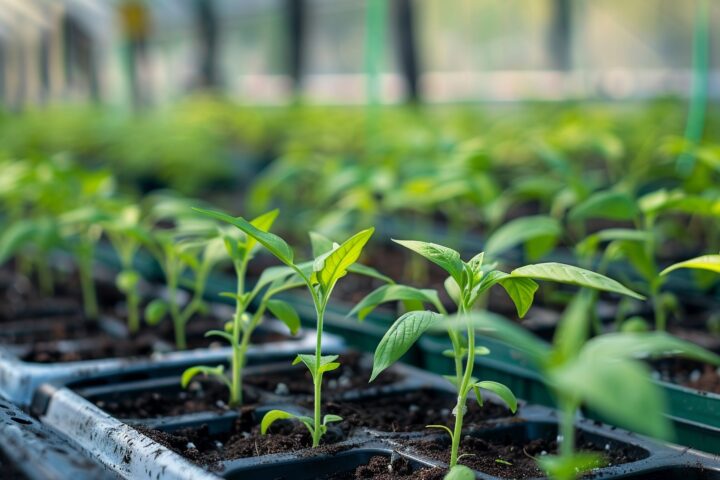
Rapid further development of the genetic scissors
CRISPR-Cas has been used worldwide since 2012 to modify genes in organisms with pinpoint accuracy. With the help of protein engineering and AI algorithms, researchers at the University of Zurich have now developed a new, more compact ‘genetic scissors’. This and similar variants will make it possible to edit genes ever more efficiently.
Friday, September 27, 2024
CRISPR-Cas originally arose as a natural defence mechanism used by bacteria against invading viruses. In 2012, molecular biologists Emmanuelle Charpentier and Jennifer Doudna used it to invent a new method of modifying DNA building blocks in the genome. Although CRISPR-Cas comes from bacteria, it can be used as a ‘gene scissors’ in almost all organisms. They received a Nobel Prize for this in 2020. The ‘gene scissors’ can be programmed to find a specific location in the DNA and modify the genetic information with pinpoint accuracy.
If you want to transport Cas proteins to the right cells in the body, their size becomes a problem. That is why current studies have attempted to use their much smaller evolutionary precursors as genome editing tools. However, this approach lost efficiency and accuracy.
The research team led by Gerald Schwank from the Institute of Pharmacology and Toxicology at the University of Zurich (UZH) optimised the protein TnpB (a CAS12 precursor). Due to its small size, the optimised TnpB gene editing system can be packaged into a single virus particle. It can still edit efficiently and recognise alternative gene sequences. In collaboration with the team of Michael Krauthammer, also a professor at UZH, they developed a new AI model that is able to predict the efficiency of TnpB editing at any target site. This makes reliable experimental design in terms of genome editing easier and faster.
Fighting cholesterol
The new UZH method is primarily a breakthrough for gene therapies in humans. For example, new gene therapies have recently been approved for the hereditary disease haemophilia. The UZH researchers immediately set about investigating whether the optimised gene scissors could be used to modify a gene that lowers cholesterol levels.
At the heart of the new UZH gene scissors is, of course, red biotechnology. But genome editing is also set to revolutionise agriculture. Long-desired plant traits seem to be within reach.
Examples of the application of genome-edited plants from breeding research could also be of interest to Swiss agriculture. In addition, it is not just about applications: new genome editing methods are constantly being developed for plants using CRISPR-Cas variants. Syngenta scientists, for example, have further developed the CRISPR-Cas12a gene scissors to significantly optimise it as a tool for improving plants.
Innovation abroad
In green biotechnology, however, these innovations are increasingly taking place outside Switzerland and Europe. The major agricultural markets such as the USA, Brazil and China are leading the way. In the USA and Brazil, genome-edited seeds are not considered to be genetically modified and are therefore not subject to strict regulation. It is no wonder that companies are increasingly concentrating their research in these countries. Genome-edited leafy vegetables from the agricultural technology start-up Pairwise are already available on the North American market. Bayer has signed a licence agreement with the company. The variety is a cross between colourful leafy vegetables with a higher nutritional value than lettuce and a unique, fresh taste that has been achieved using genome editing. In China, a genome-edited wheat was approved for cultivation in May 2024. The wheat is more resistant to disease and promises higher yields. Overall, China is leading the way in the development of genome-edited plants: 509 of the 900 known breeding projects worldwide at the end of May 2024 come from China, according to the Point newsletter from scienceindustries. ‘The main breeding goals include increased yields, disease resistance, stress tolerance and improved food and feed quality.’
Patent pending
One thing is clear: innovation will not wait for the doubters in Europe and Switzerland – this applies to the use of genome editing in both humans and plants. Of course, the UZH researchers immediately applied for a patent for their groundbreaking invention, as they write in their publication. In doing so, they have laid the foundation for ensuring that this does not remain an academic gimmick. Possible commercial applications are obvious: in mice treated with the new TnpB gene scissors, cholesterol levels were reduced by almost 80 per cent. With this promising result and the patent, the invention is also of interest to investors.
Patents allow further development
Syngenta scientists have further developed CRISPR Cas12a so that it has been significantly optimised as a tool for improving plants. The company provides such patents on genome editing and breeding technologies from academic research worldwide. The rights are accessible via the Shoots by Syngenta innovation cooperation platform. Launched in 2023, the platform brings together the external innovation ecosystem – consisting of academics, research institutes and other organisations – with Syngenta's global network of more than 6,000 scientists to develop solutions that mitigate climate change, improve biodiversity and better support small and large-scale farmers. The platform is based on the values of openness and transparency. A simple, streamlined process has been introduced for licensing the technologies. Further information on the available technologies can be found via the online catalogue on the Shoots by Syngenta platform.
Bayer, in turn, has launched an open innovation platform focusing on genome editing in fruit and vegetables. ‘Major innovations require bright minds and the creative power of many experts. That is why we are seeking partnerships with academic researchers and companies. Together, we want to develop new fruit and vegetable products that have a higher nutrient content, a positive environmental impact or greater consumer appeal by using the speed and precision of genome editing and new breeding techniques,’ says JD Rossouw. These types of collaborations are becoming increasingly important to address the complex global challenges of our food systems.
Independently of individual industry initiatives, openness and transparency are also guaranteed by patents: every invention that is patented must in turn be published and it becomes freely usable common property after the end of the 20-year patent period. Thanks to this information, other innovators are able to further develop the technology and then patent it themselves. Patents are especially indispensable for start-ups and small companies.
Sources
Kindly note:
We, a non-native editorial team value clear and faultless communication. At times we have to prioritize speed over perfection, utilizing tools, that are still learning.
We are deepL sorry for any observed stylistic or spelling errors.
Related articles

More agrobiodiversity thanks to genome editing
It is often wrongly claimed that new breeding technologies such as genome editing restrict diversity in the seed market. A new study shows that the opposite is the case. Genome editing promotes agrobiodiversity.

Nutrition: Does the future belong to the green gene scissors?
New plant varieties contribute to security of supply. The new breeding methods known as "gene scissors", such as Crispr, have the potential to revolutionise agriculture and nutrition.

EU paves the way for gene editing
The European Union aims to regulate plants bred using genome editing techniques in the same way as conventional breeding methods. The European Commission plans to present a corresponding proposal for regulating new breeding technologies in early July. This move represents a significant step towards a more productive and sustainable agriculture in the EU. Switzerland should also re-evaluate genetically edited plants to avoid falling behind.

Fehlende Vielfalt wird zum existenziellen Problem
Die schwindende genetische Diversität auf den Feldern ist zunehmend ein Problem. Dieses wird leider laufend grösser. Auch weil die Politik in der Schweiz und der EU mit der Ideologiebrille auf das Problem schielt, statt auf die Wissenschaft zu hören.

Research into fungal diseases in Lyon
Fungal diseases are one of the greatest threats to global food production. They endanger crops, cause billions in damage every year and have always put farmers under pressure. A detailed report by RTS provides insights into Bayer's global research and development centre in Lyon, where new, environmentally compatible fungicides are being researched.

Wissenschaft schlägt Alarm: Bundesratsentwurf bremst Innovation aus
Die neuen genomischen Züchtungsmethoden gelten weltweit als Hoffnungsträger für eine klimaresiliente Landwirtschaft – präzise, effizient und sicher. Während Länder wie die USA, Japan oder bald auch die EU auf Deregulierung setzen, bleibt der Regulierungs-Vorschlag des Bundesrats zaghaft. Jetzt schlagen Forschende und Industrie Alarm: Die vorgeschlagenen Regeln seien so streng, dass Innovation und Anwendung de facto blockiert würden.

Zulassungen werden weltweit zur Innovationsbremse – und die Landwirtschaft bleibt auf der Strecke
Neue Erkenntnisse aus den USA verdeutlichen, was auch in Europa und der Schweiz längst Realität ist: Entwicklung und Zulassung neuer Pflanzenschutzmittel ist zu einem derart aufwendigen, langwierigen und teuren Prozess geworden, dass selbst innovative, nachhaltige Lösungen kaum noch den Markt erreichen.

